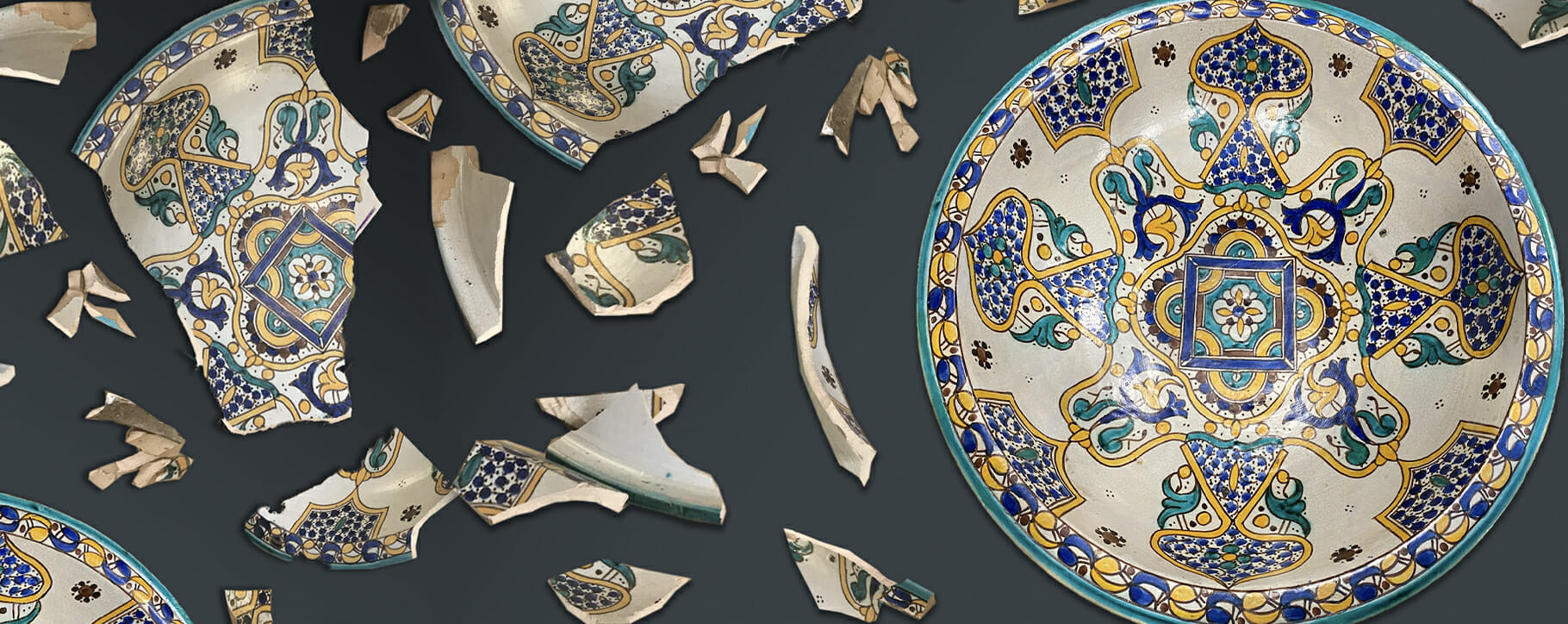When the need for restoration of ceramic items arises, the cause can most often be attributed to physical and environmental hazards. The fragile nature of ceramics means that if they are mishandled, incorrectly transported, dropped or knocked, they will likely gain some form of damage. Whether a ceramic item has been chipped, cracked in two or smashed into many pieces, we can achieve a seamless result.

It is understandable to assume that for items shattered into many pieces they will be beyond repair. But even the most heavily damaged items can be fixed and sympathetically restored by conservators. We’ve put together a helpful guide so you can understand the restoration process that your ceramics will go through if they ever sustain damage.
Before Restoration
If you accidentally damage a ceramic item or discover that damage has occurred in transit, the first step towards restoration is to collect as many of the broken pieces as possible. Try to avoid touching the edges as they may they be sharp and not passing on any contaminants from your hands will assist with the cleaning process.
Either wrap the pieces in cling film or place in clean plastic bags. This will keep the broken edges clean and minimise the risk of contamination from dust. Then place the ceramic item and any pieces into a box and protect with bubble wrap, tissue paper or polystyrene.
Studio Assessment
Once we have received the ceramics into the studio, our conservator will make an assessment of the conservation work required. This will include ascertaining which, if any, pieces of the ceramics are missing and need to be replicated.
Cleaning
After assessment of the item, the first part of the process is to comprehensively clean the ceramics. This is especially important around the edges and between any cracks that are present, to ensure that no contaminants, dirt or dust becomes trapped. When the repairs take place, clean edges will assist the bonding materials to re-adhere.
Repair and re-assembly
The extent to which repairs and re-assembly of the ceramics are needed is dependent on the type of damage that has been sustained. For even the most heavily damaged items, restoration is possible and can achieve a fantastic result. After the available pieces are realigned, they are bonded back together. The conservation apparatus for achieving this will be dependent on the material of the ceramic, for example, whether the item is bone china, terracotta, or soft paste porcelain.
Missing Pieces
For any items that have missing pieces that were lost when damaged, these areas can be carefully replicated using a synthetic material. We recently restored a clay elephant that had been snapped off a wooden plinth, and in the process its ivory tusk was lost. By remoulding using the remaining intact tusk, we were able to re-attach this new part on to the elephant. You can read more about this restoration here. Once a piece has been created, it can be carefully affixed also using the bonding method.
Colour Matching and Painting
Once the damaged areas have been repaired or replaced, the next step is to colour match and retouch. By colour matching against the existing paintwork on the ceramic, our conservators can replicate intricate patterns and designs. This part of the process is completed by hand painting or airbrushing to sympathetically match the original, intended look of the item.
Varnishing
As a final step, varnishing ceramics will provide comprehensive and lasting protection. After applying the appropriate varnish, for example gloss or matt, this will provide a uniform finish to the piece and complete the restoration. It is advisable once your ceramic item has been restored that it is used only for display purposes instead of in a functional capacity.
For further insight into the restoration of ceramics, or if you would like our recommendations and a quote for your own items, contact us for free, no-obligation advice.






